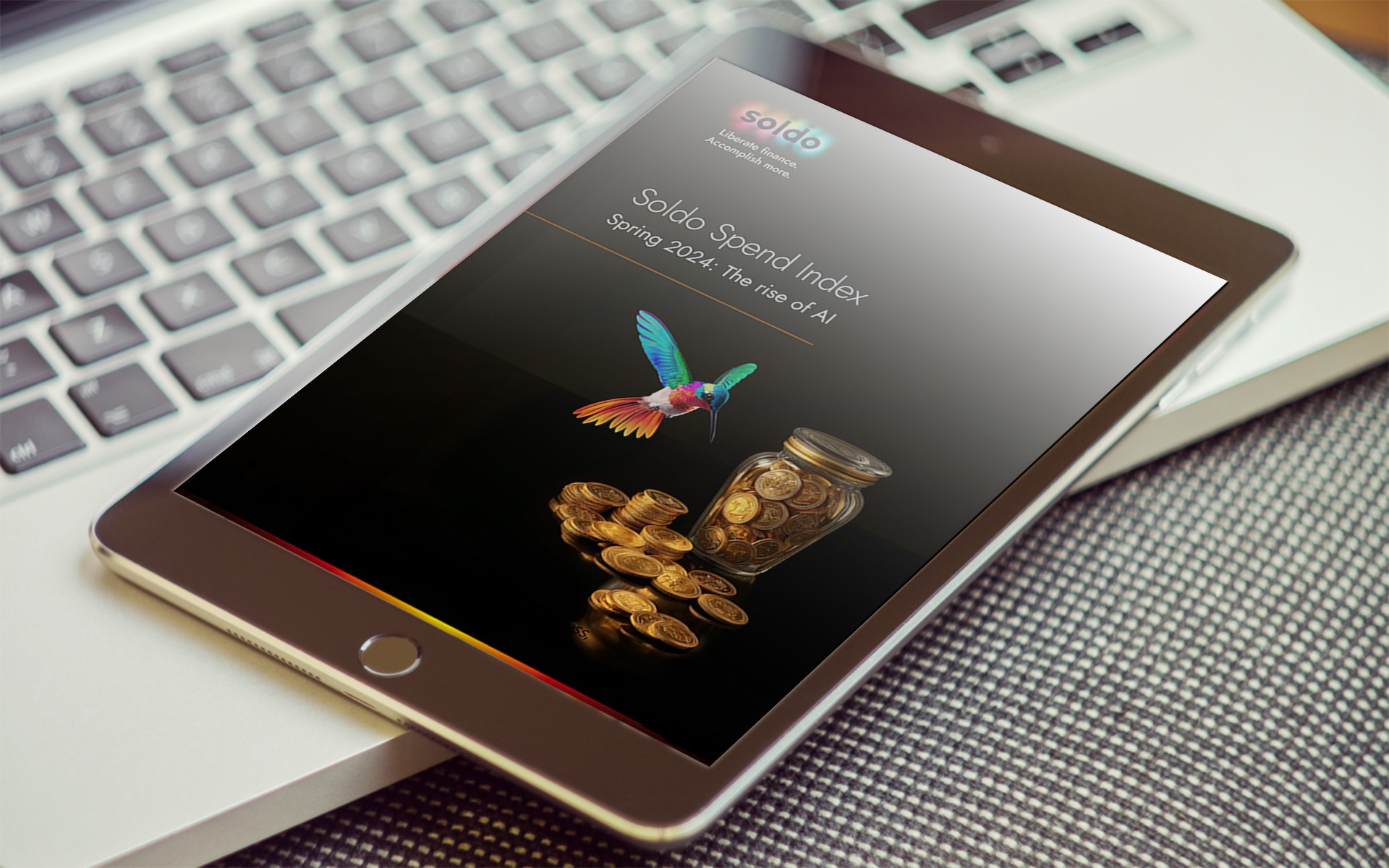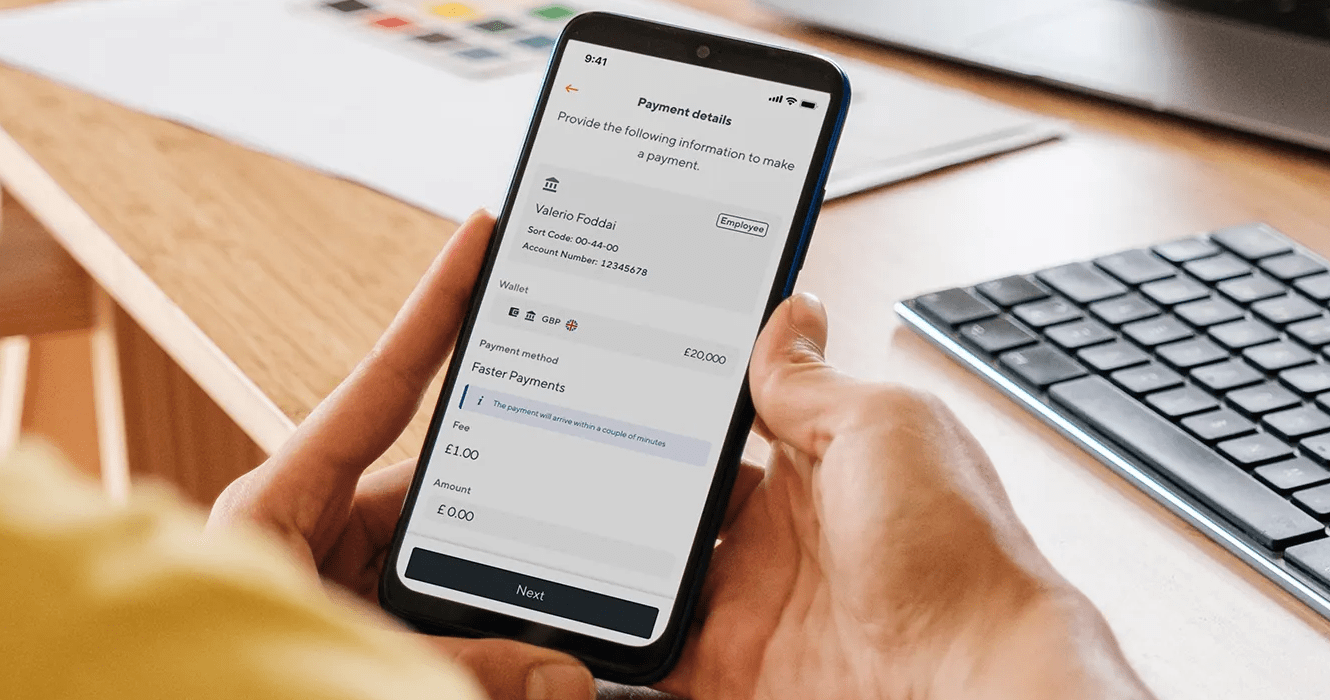Simplifying the Borrowing Journey for SMEs with iwoca
An Interview with Michaël Elalouf, CFO, iwoca
iwoca is on a mission to help small business owners spend less time on banking paperwork and more time running their businesses. The company sees lending to SMEs as archaic – especially when compared to the many options we have to borrow money easily in our personal lives. iwoca, therefore, replicates the consumer borrowing experience: fast and simple for the borrower, while under the hood a whole raft of data integrations making decision-making faster and more accurate. CFO Michaël Elalouf is an ex-Barclays investment banker and is ideally positioned to give prepaid card provider Soldo a tour of the business.
The SME world seems to be following the consumer world. Consumers have lots of challenger brands they can choose from. Are small businesses making the same sort of decisions as consumers do?
Yes, definitely. We want iwoca to be a mainstream name, and we want to provide access to finance to as many SMEs as possible in as slick a way possible. And what we figured out is that the offer available to what we define as an SME is very thin. I was at an investor conference and, for them, small SME lending is £10m to £30m. That’s what they call small. For us it’s from £10k to £30k, which is targeting millions of small businesses in the UK and tens of millions across Europe. So that’s definitely the market we’re tackling, and that’s where no player has been able to grow and to attract significant numbers of companies.
So what was the problem? Is it just that for traditional banks servicing on that small scale isn’t worth it?
Yes. Banks are big institutions with a lot of available resources, so if they wanted to put a lot of their assets behind it, they might find a way to resolve the problem; but they have too much legacy; they’re not capable of having the right level of technology and automation to originate loans in an efficient enough way for it to be worth the small amounts.
If you talk to a traditional bank and you ask for £2m or £3m, they can amortize their high upfront costs on large amounts. But there are no banks that are geared towards below £0.5m. So if you don’t have a relationship with a bank, or you don’t already have an established track record with them, they won’t look at you.
I think the cost for underwriting from a bank is prohibitive versus the ability for them to make a decision effectively. So we invested our time into developing a technology that allows us to make credit decisions for small businesses in a slick and efficient way.
There are no banks that are geared towards below £0.5m. So if you don’t have a relationship with a bank, or you don’t already have an established track record with them, they won’t look at you
So how does that work? How did you shorten the timeframe?
For the underwriting itself, we’ve built in a lot of integrations with data service providers through open lending with banks in order to provide instant access to data that we can gather, understand and use to make a credit decision.
So if you ask iwoca for a small loan, below £15,000, this decision will be automated, meaning that you’d get an answer instantly. This is more common in the consumer space, but in the SME market, it’s quite unique.
For larger amounts, there is some manual intervention which means waiting a couple of hours or so. But you’ll still usually get an answer – or even your loan – on the same day. We’re quite proud that our record from starting up the application to having funds in the customer’s account is three minutes and 26 seconds.
Is it technology that allows you to have quasi-instant access to multiple data sources that matters, or is it the quality of that data and your ability to bring it together from multiple sources to make better quality decisions that supports your business?
It’s all of the above. Indeed, it’s how you gather the data and make sense of it, but it’s also the track record we’ve been building over the past eight years in terms of underwriting and lending to tens of thousands of SMEs. All of that gives us a wealth of insight that we can use to calibrate our scorecards. Collecting data is certainly tricky, but if you don’t know what to do with it, it’s useless. It’s the whole process from gathering data and being able to give a fair price and a fair risk assessment too.
What is the ecosystem here? You’ve got data owners like Experian and Trans Union etc., and then brands like yourself who own the customer relationship…
We do use credit bureaus. That’s part of the dataset we need for underwriting purposes. We’re also one of the lead developers of Open Banking capabilities so within months we were potentially connected to 96% of all SMEs because we’d built all the integrations with the major banks, giving us a massive footprint. That extends to other providers: we integrate with Xero, the number one accounts package in the UK and Tide too. These integrations allow us to enrich the underwriting and also to make our customers’ lives easier by taking key details for a loan application from existing data sources.
Does this allow you to ask a new class of question? If I’m a Xero user and I want to borrow some money, you can see my bank records, you know whether I pay my VAT on time, for example. Does that give you a better all-round picture of a customer?
Yes. As part of the underwriting risk, we collect bank statements so that we can understand the cash flow of the business. That’s how we can form a very holistic view of the business. Taking shortcuts – how many years you have been in business, how many directors you have – that’s a bank’s game. Instead, we can use technology for a true view. Obviously, all these data points could potentially have an impact on the decision, but they are not hard locks, per se. This is critical in terms of how we approach underwriting: deeper factual knowledge and more nuance in the decision-making.
As part of the underwriting risk, we collect bank statements so that we can understand the cash flow of the business. That’s how we can form a very holistic view of the business. Taking shortcuts – how many years you have been in business, how many directors you have – that’s a bank’s game.
What is the direction of travel for in your view for SME services? Everyone now uses automated SaaS services like Dropbox, Office365 or GSuite so digital is really helping SMEs do more and do more in an interesting way. Equally, it’s notoriously hard to get SMEs to change their habits.
The issue we face is that there were no good solutions when it comes to lending for SMEs. Xero went from nothing to half a million customers in the UK in less than a decade. Now, arguably accounting software is very sticky because once you have migrated to a new package, the overall running cost is relatively limited, but the cost and effort of changing packages is much higher, so they’re very sticky by design. But they came into the market with a product that was superior to the competition, and so they managed to take a substantial market share in the SME space.
So my take on this is that the reason habits are hard to change for SMEs is because there’s never been a good enough offer on the table. We want people to adopt our product naturally because it’s a more relevant and useful product. We’ve already seen this in the consumer space: the neo-banks have a big installed base now, and people really use and respect some of their services. So if you come in with a superior product, then people are going to adopt it.
How do you keep lending viable and insulate yourselves complexity at a time when the world is changing around us all and life is inherently unpredictable for many businesses?
Our track record helps, the wealth of our data is another key factor, but we haven’t yet mentioned granularity. We have tens of thousands of customers at any point in time, so we do see a lot of through-put and we sign up thousands of new customers every month. Our job is to maintain our risk assessments as accurately as possible and use the flows of data we receive from customers to understand the science in a way that shows where potential weaknesses can appear in parts of the economy. We need to keep on top of that, and I think we’re benefiting from a very granular and rich flow of new businesses coming our way. That depth helps us understand our customers better than any traditional finance provider.
What’s next for Iwoca? What’s the roadmap?
We’ve built a three to five-year roadmap, which includes launching iwocaPay, a point-of-sale (POS) finance solution; and also a non-personal guarantee product. We’re also very keen on building deep integration with Xero because that will allow us to give access to finance to half a million SMEs directly via their own Xero app.
Finally, there’s Open Lending (extending the iwoca platform to other brands), because that will allow us to spread our technology and enrich more SMEs. If we can pull that off in the next three to five years, I think we’ll be in a very happy place.
This interview is part of a series by Soldo, the prepaid company card solution that makes your expense accounting simple. You can read more interviews from Soldo’s interview series here.








